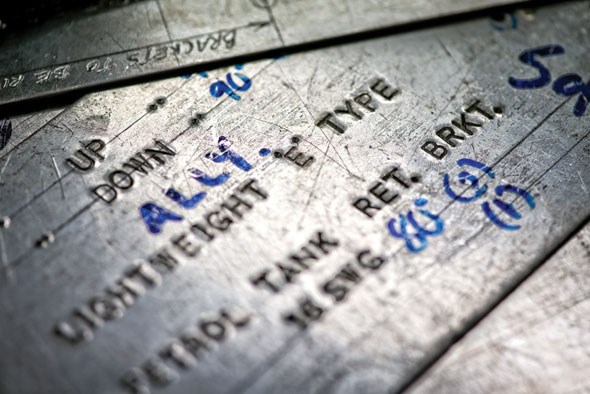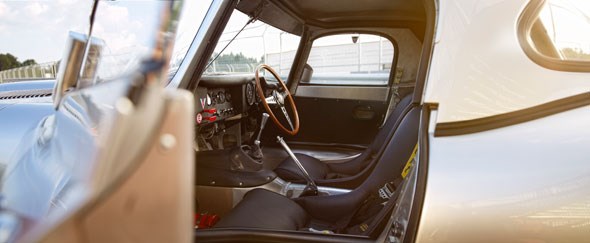
1) This was one of Jaguar’s first aluminium pioneers
You thought today’s crop of Jaguars were clever for their use of weight-saving aluminium? Think again. The leaping cat was at it back in the 1960s – the Lightweight E-type was clothed in an alloy body in place of the regular E’s steel panels. The new 2014 Lightweight E-type unveiled at Monterey this week is all-aluminium too. Result? It weighs 114kg less.

2) It’s a D-type’s engine for the modern day
Jaguar bases the engine on the D-type’s 3868cc 12-valve straight six – but has given it a very modern makeover. Instead of an iron block, Jag uses an aluminium base with pressed-in steel liners for extra durability. Dry-sump lubrication will keep it oiled even during hard cornering. With Triple Weber carbs, it’s rated at 335bhp at 6500rpm, with 280lb ft from 4500rpm.

3) You’ll be able to strap yourself in and race it
The Lightweight E-type is FIA-approved for historic motorsport, meaning this car can be raced right out of the box. Expect to see wealthier types spanking it at upper-crust events at Goodwood and Laguna Seca.

4) It’s based on original 1960s blueprints
Jaguar Heritage electronically scanned the body of an original 1960s Lightweight to create a highly accurate digital map. And whereas the earlier models were winningly idiosyncratic, this time they’ve flipped the data for a mirror image to ensure the 2014-spec Lightweights’ bodies are perfectly symmetrical. No mean feat when the bodywork is made up of 230 individual components.

5) The exhaust manifold glows red-hot at high revs
Exhaust gases from the 3868cc straight six exit from a single valve and make the manifold red-hot, as captured in this photograph of the motor based on the innards of a D-type racer like the one that won Le Mans in 1957. The manifold is a steel fabrication and leads to a centre silencer box and on to twin, highly polished pipes.

6) Retro Smiths dials have never looked so good
If you’re time-warping back to the 1960s in a British sports car, it’s got to be Smiths Industries dials. The E-type doesn’t disappoint. The tacho runs to 7000rpm and is redlined at 6000rpm, while that gorgeous speedo runs out to 160mph. It’s just crying out for an empty, midnight stretch of M1 motorway…

7) The aluminium roof is detachable
All six Lightweight E-types come with removable hard-top roofs. Don’t expect to see them open-top on track, but on the road it can be whipped off for a dash of al fresco fun. The view out is great: just look at those 21 louvres on the E-type’s trad, l-o-n-g bonnet…

8) The new E-types wear period 1960s chassis numbers
The original Special GT E-type of the never made its original planned target of 18 cars, leaving six unused chassis numbers allocated in 1963. There will only be six new 2014-spec Lightweight E-types like the one you see here – and they use up those old chassis numbers. How to spot one? The original’s ID numbers start with an S prefix.

9) The mag wheels are just 15in in diameter
Made from lightweight magnesium discs, the wheels are 15in x 7.0J at the front and the same diameter at the rear but an inch wider at 8.0J. They wear classic Dunlop rubber and house disc brakes front and rear. Unservoed, naturally. And just check out that delightful leather strap. This thing is dripping with period detail…

10) It’s hand-built in Browns Lane
You thought Browns Lane was closed? Think again. Jaguar Heritage has, appropriately enough, based itself there – and the Lightweight is assembled ‘close to where the original Lightweight E-types were assembled in 1963/64.’ It’s made largely by hand, by the same team who make Jaguar and Land Rover’s prototypes. Which explains the £1m price tag.

11) No two Lightweight E-types will be the same
Jaguar confidently predicts that all six new E-types will be unique, as owners can trim the cabin to suit their taste. A consultation with Jag design chief Ian Callum is included in the price. Which is nice.
Read our full story on the new 2014 Jaguar Lightweight E-type here.